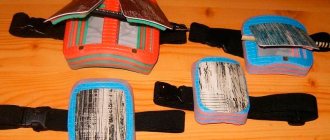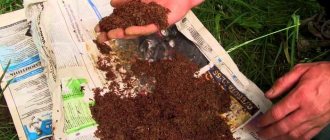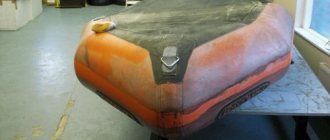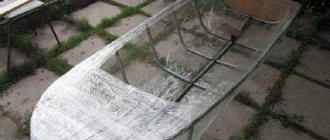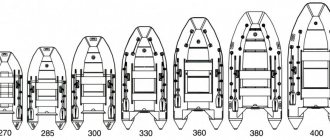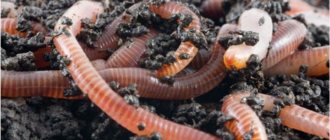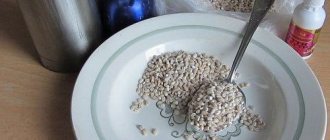Bloodworms, for the most part, are used for fishing in cold weather, or more correctly, in the winter. This is a fairly attractive bait that is included in the diet of any type of fish. During such periods, when it is cold outside, the fish prefers food of animal origin. Bloodworm, in this case, is considered the most accessible bait. It can also be washed in a pond, so it can easily be purchased on the market. Bloodworms are suitable for catching crucian carp, bream, carp and other fish. Bloodworms are also placed on a hook at other times, not only when it is cold. It is an integral element of so-called sandwiches. This is at a time when a bloodworm is also attached to the hook along with a nozzle of plant origin, despite the fact that this is not necessary. The presence of a bloodworm on the hook, as an addition to the main bait, can guarantee bites.
What is a bloodworm used for?
The bloodworm, first of all, will help preserve the bait, especially in conditions when it is cold outside, especially since you have to go fishing over a long distance. It will be a great pity, and fishing simply will not take place if the bloodworms turn into larvae unattractive to fish. If it freezes and immobilizes, then it will no longer attract fish. In this case, the fish will only be interested in live bait, and only under such conditions can one count on a catch.
Therefore, certain requirements are imposed on the bloodworm. Eg:
- The bloodworm must be made of particularly durable material. Often fishermen place bloodworms in matchboxes, which cannot withstand loads, especially unexpected ones, and the bait becomes unusable. In addition, when moving, such a matchbox can simply get lost.
- The lid in such a homemade product must fit well to the base of the box, otherwise the bloodworm may fall out of it or crawl out: since it is, after all, alive.
- The device must provide proper thermal conditions with air access, otherwise the larvae will either freeze or die.
What is the purpose of the bloodworm?
The bloodworm is an important fishing device, especially if it is winter fishing. After all, this little thing will allow you to transport and store bloodworms without any difficulty.
It will be a great shame if the bait, which is so difficult to obtain or purchased in a store, is spoiled. Consequently, there will be nothing to do while fishing.
What properties should a truly high-quality device for storing bloodworms have?
First of all, you should pay attention to the strength and reliability of the material from which the blood bottle is made
Since it should not allow the bait to be crushed, as often happens with a matchbox, it is this that fishermen choose as a place to store bait; It is also very important to ensure that the lids fit tightly to the walls of the homemade product. Since it is necessary to prevent bloodworms from falling out; Plus, you need to monitor the thermal conditions in the bloodworm
Read: Catching grass carp with a float rod
It must be warm enough so that the larvae do not die. And to supply air, small holes are made in the device.
Making moth bottles with your own hands
Fishermen make a significant part of their equipment with their own hands, and the bloodworm is no exception. The thing is that the amount of fishing equipment that is actually needed for fishing is simply not realistic to purchase for money. And this, despite the fact that some of them do not cost a lot of money. But if you add up all the funds, it turns out to be a solid figure.
This is a very simple device in design, which is made from scrap materials. It goes without saying that anyone who does not want to spend precious time on this process can go to a fishing store to purchase such a simple device.
What you need
It is extremely important that the blood cell has the ability to maintain temperature conditions. Alternatively, this can be organized by placing this device on the fisherman’s knee. The strength of the moth bottle can be ensured if it is made of polystyrene foam. Moreover, only dense foam will do. Such foam will not only be durable, but will also be able to retain heat in the device. So that the heat from the fisherman’s foot can freely penetrate inside the moth, its lower part is made of summer, non-dense fabric. The material from which thermal mats are made is also suitable for the manufacture of the case. This material is not expensive and it is possible to make a device of any shape from it, since it is easy to process.
How to make a moth bottle from foam plastic?
Polystyrene foam is an inexpensive but practical material that is easy to process and retains heat excellently. Therefore, it is completely possible to make a moth bottle from polystyrene foam in the form of a small box. At the same time, we would like to remind you that only dense foam plastic is suitable, for example, the kind that is used to make floats. Despite the fact that many fishermen make do with simple polystyrene foam, but with a higher density.
What does that require:
- Styrofoam.
- Steel wire.
And tools:
- Hacksaw.
- Stationery knife.
- Sandpaper (zero grade).
How to do it:
- Taking a piece of polystyrene foam, the dimensions of the future box (mothbox) are marked on it. The box can vary in size: 8 by 5 by 3 centimeters.
- A workpiece is cut out using a hacksaw along the lines of the applied pattern. It is better to use a hacksaw because it has very small teeth.
- Moving 5 mm from the edges of the cut-out workpiece, draw another rectangle, which will then turn out to be the inside of the bloodworm, where the larvae will be stored.
- The inner part is cut out using a stationery knife. It should be pulled out so that it does not reach the bottom of the workpiece by 5 mm.
- Then you can start making the lid for this box. Its dimensions: 7 by 4 by 5 centimeters.
- Upon completion of manufacturing, the cap is well adjusted to the hole using sandpaper.
- The lid and the box are connected using a wire 1 mm thick.
- To do this, a hole is drilled in the back of the box and lid. It is better to drill the box together with the lid so that the holes match exactly.
- After drilling the hole, you can begin connecting the box and the lid. To do this, insert the lid into the box and insert the wire into the hole.
- If something prevents the connection from being made, it is better to treat suspicious areas with sandpaper.
In order to protect the bait from the cold, you can put a piece of flannel on the bottom of such a bloodworm.
Creation of one - and three-section knee bloodworm
For such a homemade project you will need some materials and tools. In this case, there are no special requirements for the materials; based on this, any angler using this example will be able to make a device from any suitable material. The main thing is that the product performs its main functions.
The following materials will be useful:
- Glue.
- Narrow material.
- Thermal saving material.
- Karemat.
- Plastic for gaskets.
The following tools will also come in handy:
- Stationery knife.
- Scissors.
Manufacturing stages
Before starting production, you should carefully consider all the stages of production, and decide on the shape and size of the future bloodworm. The advantage of independent manufacturing lies in this, that it is possible to do what is needed. It is not possible to purchase what you need in a store. This is another factor that forces fishermen to make their own gear. Options for the most common homemade products will be discussed in this article.
Making a simple bloodworm
- At the initial stage, you should form three rectangles from heat-resistant material.
- “Windows” of the required size are formed in the center of these rectangles. The thickness of the walls of the future moth chamber should be about 10 mm.
- The fabric is attached to the bottom, and then the elastic band is attached with glue.
- Some fishermen make the mistake of not securing the elastic between two layers of fabric, which prevents heat from flowing inside the box. Due to the elastic band, reliable contact of the bloodworm with the fisherman’s body is ensured.
Now all that remains is to test this device on winter fishing, in the midst of real cold. In most cases, fishermen keep bloodworms in their bosoms, which is very uncomfortable. Every time you have to reach into your bosom to find bait. What to do if the bite is quite intense? If you make a moth like this and fasten it on your knee, then fishing will be not only exciting, but also enjoyable: since the bait will always be at hand.
There is another homemade product designed for three compartments. The bloodworm for bait is stored in one compartment, the feed bloodworm is stored in the second compartment, and the third compartment is used for jigs and maggots. From time to time this approach works.
Moth tray for a couple of compartments
To make such a box, you will need to follow these steps:
- Not huge blanks are created, measuring 150 by 170 mm from karemat.
- The lower layers, and there should be three of them, are carefully glued together with glue.
- Then, not huge “windows” are formed in the blanks.
- Then, the fourth layer of karemat is glued.
- Next, the homemade products need to be carefully cultivated using a little sandpaper.
- To summarize, rubber bands are attached to the homemade products, which help to attach the bloodworms to the leg and for attaching the lids.
- But that’s not all, you need to fasten the linings on the lid, after which the bottom layer of fabric is glued. The bloodworm for winter fishing is ready and all that remains is to cultivate the product a little, and then try it out on fishing.
Purpose of the bloodworm
Have you been trying to heal your JOINTS for many years?
Head of the Institute for the Treatment of Joints: “You will be amazed at how easy it is to cure your joints by taking the product every day for 147 rubles...
A hand-made knee-mounted bloodworm for winter fishing is primarily designed to protect the bait from damage. In addition, this option is extremely comfortable and will never get lost, like, for example, a matchbox used by almost everyone.
And in order to clearly fulfill the purpose for which such a thing is done, it must comply with certain rules:
The material from which the item will be made must be extremely strong. For small loads, the box must protect the bloodworm from damage.
- The lid with which the item will be closed must be tight, otherwise the bloodworm will be lost.
The inside of the box must be moderately warm and be sure to take into account the entry of air into the mothbox. Since the bloodworm is alive, it needs to be kept in cold conditions for a long time and not suffocate.
In addition to all this, you need to think carefully about the process of attaching a knee moth, made with your own hands, to your leg.
An old strap from a sports bag or backpack will work best for this purpose. If none of this is available, then a regular strip of fabric will do.
Making a bloodworm
Let's look at how to make a regular type moth bottle with your own hands. A more comfortable material for the production of a moth tray would be polystyrene foam. He is unrivaled in handling all the requirements for the finished product.
Read Fishing for grass carp, the best ways
First of all, for this option you will need a good and well-shaped piece of foam. Next, you will need to draw on it all the details of the box ( or drawer - a container (container) in the shape of a polyhedron, most often a rectangular parallelepiped
) with suitable dimensions.
Remember that the lid must close the box tightly, so measure everything well before applying the templates.
- You can cut out all the parts using a hacksaw or an ordinary stationery knife.
All stripes must be even, otherwise the box and lid will not connect. The bottom of the box is left about 5 mm thick. This is completely sufficient for storing bloodworms.
After cutting, the lid is treated with small sandpaper to ensure a clear fit into the top of the box. It is best to connect them together using a narrow wire.
To keep the bottom of the box quite warm, a piece of flannel is glued to it. Well, all that remains is to attach a strap to attach it to the leg.
Mothbox with several cells
Making a foot moth with several cells with your own hands is as simple as a regular one, but we will use old mats as a base.
The material on them is quite narrow, so it will be necessary to immediately make 3 layers of similar blanks. They are glued to each other one by one, then holes are made without touching the bottom layer according to the number of cells.
The best option contains three cells.
After all this, the 4th layer is glued, but holes are already made in it in advance, which are slightly larger than in the previous ones.
The parts cut from this layer will serve as lids, which are attached using pieces of fabric. A piece of flannel is glued to the bottoms for insulation.
A strap or regular thick elastic band is also suitable for attaching the device to the leg. Now we have completed the production of a knee-mounted moth with 3 cells ( Cell - honeycomb
) with your own hands (
the upper limb of a person, the musculoskeletal system, one of the most important parts of the body
).
What to pay attention to when making
In addition, such simple production of simple boxes requires certain rules. Eg:
- There is no need to apply glue over the entire surface of each layer. It is enough to apply it where the walls of the entire structure are located. Under such conditions, a large amount of glue is saved.
- In order to form a compartment in a 3-layer workpiece, it is better to use a stationery knife with a narrow blade. If there is no knife, but there is a knife with a wider blade, then the blade can be narrowed using pliers.
- To give all layers a certain shape, use an auxiliary form. A tin can or other unnecessary container is suitable for this.
- When forming windows of the fourth layer, keep the knife at an angle, towards the center of the product. The result will be a window with a slope towards the center. This will allow you to hold the lid in a fixed position without special latches.
- Upon completion of the final operations, it is enough to process the product in order to remove burrs or sharp edges.
- The elastic bands on the leg should be connected using Velcro, which will prevent snow from getting into the moth.
- The presence of special linings on the lids of homemade products makes their pair stronger. Also, special linings will allow you to open the butterfly without much effort, and in addition, they close the gap where unnecessary frost can penetrate.
- The material for the plastic pads must be dense. Plastic from ordinary plastic bottles will not be shipped.
- The fabric for the bottom layer should be narrow, otherwise it will not transmit heat inside the mothbox. Otherwise, it must have a special impregnation so that the juice that the bait secretes does not get on the clothes, as stains may appear.
Storing bloodworms
Storing bloodworms is greatly simplified if the fisherman has a bloodworm. If you follow certain storage rules, mosquito larvae can be stored for up to a month.
Rules for storing bloodworms
- Bloodworms love moisture, so you need to put wet foam rubber on the bottom of the bloodworm container.
- Then, living organisms are laid out in a narrow layer and sent to a cool place, but not very cold and, under no circumstances, to a warm one.
- Approximately once a week, the larvae are removed, and the foam rubber is moistened, after which the bloodworms are again sent to the bloodworm.
Armed with knowledge, it is possible to make a device that will help you store mosquito larvae for a long time, thereby providing yourself with bait for a long time, and high-quality bait.
Fishing, and especially winter fishing, requires from the fisherman not only physical strength, patience and perseverance, but also skill not only in catching fish, but also in making fishing accessories. Anyone who cannot make a bloodworm at home with their own hands can hardly count on any progress in mastering fishing techniques. But this requires much more knowledge and skills.
